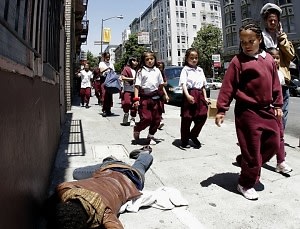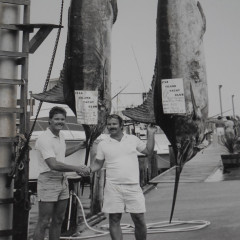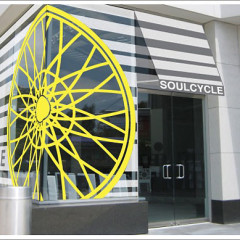 San Francisco is turning its last rough neighborhood into a tourist detraction. A spate of high-profile crimes and a surging murder rate has New York on edge. And ladies and gentlemen, Chinatown is burning.
San Francisco is turning its last rough neighborhood into a tourist detraction. A spate of high-profile crimes and a surging murder rate has New York on edge. And ladies and gentlemen, Chinatown is burning.
Today the Times ran two big news stories about the return (and in one instance, glorification) of edginess.
First, officials in San Francisco are ready to throw up their hands and, rather than revive the city's stubbornly shattered Tenderloin District, turn it into a stop on the tourist itinerary somewhere between Golden Gate Park and Alcatraz. The domain of drunk and drugged out derelicts will appeal to tourists, planners think, because so few gritty neighborhoods remain in America's polished major cities.
Randy Shaw, a local housing advocate and cheerleader for the Epcot-ization of the Tenderloin explains to the Times' Jesse McKinley:
“We offer a kind of grittiness you can’t find much anymore. And what is grittier than the Tenderloin?”
 This is a plan that could only really develop beyond the Onion headline phase in live and let live San Francisco. A "progressive" Nanny State (no plastic bags, though Tenderloin residents presumably go for brown paper ones) and liberal social initiatives (the city was America's first to offer universal health care and is famously tolerant of so-called alternative lifestyles), co-exist with a hands-off attitude that makes the City by the Bay a haven for homeless people and blatant vicing it up in public.
This is a plan that could only really develop beyond the Onion headline phase in live and let live San Francisco. A "progressive" Nanny State (no plastic bags, though Tenderloin residents presumably go for brown paper ones) and liberal social initiatives (the city was America's first to offer universal health care and is famously tolerant of so-called alternative lifestyles), co-exist with a hands-off attitude that makes the City by the Bay a haven for homeless people and blatant vicing it up in public.
So why not treat the crackheads, alcoholics and hobos like aquarium attractions?
“We can bring people into an SRO and show them where people are living now,” Mr. Shaw said, referring to the single-room occupancy dwellings, or residential hotels, in the area. “And that’s a real plus.”
I guess bringing new people and their money into the Tenderloin could help the neighborhood in the long run. But this seems like a cynical way to go about it, even if advocates like Shaw insist San Franciscans appreciate the authentic district.
New Yorkers don't really have a charmingly decrepit neighborhood to call their own these days. For better or worse, there's no way for the city to preserve its down-and-out and place them under a tourist-friendly microscope.
But officials and residents--including a few that probably longed for the bad old days of the Taxi Driver-era during the city's shiny happy boom years--are concerned that a grimy enclave like the Tenderloin could return to thoroughly gentrified swaths of Manhattan and Brownstone and Hipster Brooklyn.
 This is because the murder rate for the first quarter of 2010 was up 22% over the same period last year. Rapes spiked 17%, shootings 14%. The lingering recession and New York's fiscal nightmare loom over the statistics. Namely, budget cuts will further erode an already downsized police force: the NYPD is projected to shrink from a high of 40,285 officers in 2000 to 33,000 next summer, its lowest point since 1990 when the number of murders peaked at 2,245.
This is because the murder rate for the first quarter of 2010 was up 22% over the same period last year. Rapes spiked 17%, shootings 14%. The lingering recession and New York's fiscal nightmare loom over the statistics. Namely, budget cuts will further erode an already downsized police force: the NYPD is projected to shrink from a high of 40,285 officers in 2000 to 33,000 next summer, its lowest point since 1990 when the number of murders peaked at 2,245.
There are the usual, pretty convincing caveats: a few high-profile crimes don't mean the city is going to hell; overall crime is down slightly this year; and the first three months of 2010 still saw fewer homicides than the same periods in 2004, 2005, 2006 and 2008.
Still, Manhattan borough president Scott Stinger told the Times' Ray Rivera and Al Baker that the fear among his constituents is palpable:
"[Stringer] added that for the first time in a long time he is hearing from constituents who do not feel safe in the subways or the streets. A string of six stabbings involving high school students over a few days last month, along with a subway brawl that left two people dead and... Easter night mayhem in Times Square have helped stoke those fears."
Meanwhile, a massive fire swept through three Chinatown buildings last night. And there were few more potent visual representations of New York's 1970's near-death throes than the arsonist landlords in the Bronx who torched their abandoned buildings for the insurance money. No one has claimed the Grand Street fire started this way, but in light of recent grumblings and rumblings, the parallel unsettles.
The worst of the Great Recession might be over. But the aftermath sticks around. Maybe people who can afford a trip to San Francisco are happy to gawk at those worse off than they are, to see what could have been, while New Yorkers hope what once was doesn't come to be again.
Main Photo via SFCommunity
Photo 2 via Thor Swift/NYT)


.jpg)
.jpg)



.jpg)
.jpg)
.jpg)




